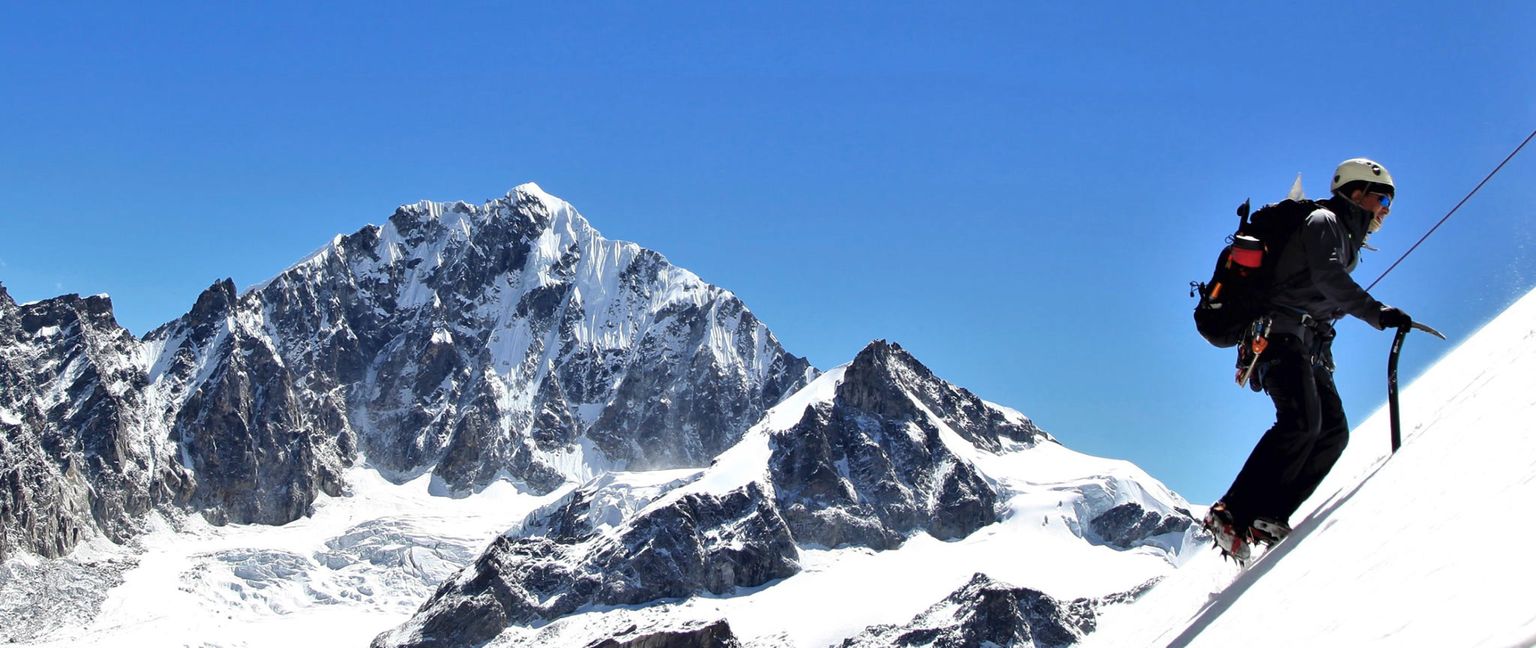The Ultimate Himalayan Ice Hack: Unveiling the Secrets to Conquer the Peaks

The Ultimate Himalayan Ice Hack: Unveiling the Secrets to Conquer the Peaks
The Himalayas, with their towering peaks and treacherous terrain, have always held a mystique and allure for mountaineers. However, attempting to conquer these icy peaks requires much more than just raw determination and physical strength. Success in Himalayan ice hacking is dependent on a deep understanding of the terrain, the science behind ice formation, and the essential tools and techniques needed to navigate these frozen landscapes. In this article, we will delve into these aspects and unveil the secrets to conquering the peaks of the Himalayas.
Get weekly updates.
Understanding the Himalayan Terrain
Before embarking on any ice hacking expedition in the Himalayas, it is crucial to gain a comprehensive understanding of the terrain. The Himalayas are characterized by their jagged and unforgiving features, making it essential for climbers to be well-prepared for the challenges ahead.
The Himalayas, often referred to as the "Roof of the World," are a majestic mountain range that stretches across several countries, including India, Nepal, Bhutan, and Tibet. With its towering peaks and vast expanses of snow and ice, the Himalayas have captivated the imagination of adventurers and mountaineers for centuries.
The Unique Challenges of the Himalayas
The Himalayas pose their own set of challenges that are distinct from other mountain ranges. Extreme weather conditions, unpredictable avalanches, and steep slopes intensify the difficulty of ascent. The region experiences some of the harshest weather on the planet, with temperatures dropping to bone-chilling levels and winds reaching hurricane force.
One of the most formidable obstacles climbers face in the Himalayas is the risk of avalanches. The combination of heavy snowfall, unstable slopes, and seismic activity creates a volatile environment where avalanches can occur with little warning. Climbers must constantly assess the snowpack and make calculated decisions to minimize the risk of being caught in an avalanche.
Furthermore, the Himalayas are home to a vast network of glaciers, which can be treacherous to navigate due to their constantly shifting nature. These massive rivers of ice are constantly moving, creating crevasses and seracs that can swallow climbers whole. Negotiating these icy obstacles requires skill, experience, and a keen awareness of the ever-changing glacial landscape.
The Importance of Proper Preparation
Proper preparation is of paramount importance when attempting to conquer the peaks of the Himalayas. This includes gaining expertise in ice climbing techniques, honing physical fitness, and acquiring knowledge of the region's specific hazards and weather patterns.
Ice climbing in the Himalayas demands a unique skill set. Climbers must be proficient in using ice axes and crampons to ascend vertical ice walls and negotiate icy ridges. They must also be well-versed in rope management and self-arrest techniques to ensure their safety in the event of a fall.
Physical fitness is another crucial aspect of preparation. Climbers must possess excellent cardiovascular endurance, muscular strength, and flexibility to withstand the demanding physical exertion and extreme altitudes. Training programs often include a combination of cardiovascular exercises, strength training, and high-altitude acclimatization to prepare the body for the challenges ahead.
Acquiring knowledge of the region's specific hazards and weather patterns is vital for making informed decisions during the expedition. Climbers must study the topography, understand the behavior of avalanches, and be aware of potential hazards such as hidden crevasses and rockfall. They must also closely monitor weather forecasts and be prepared to adjust their plans accordingly to avoid dangerous conditions.
Additionally, climbers must carefully plan their routes, ensuring they have adequate supplies, and assess the potential risks to make informed decisions along the way. They must carry essential equipment such as ropes, harnesses, helmets, and avalanche safety gear. They must also pack enough food, water, and fuel to sustain themselves during the expedition, as well as emergency supplies in case of unforeseen circumstances.
Conquering the Himalayas is a feat that requires not only physical strength and technical skills but also mental fortitude and a deep respect for the power and unpredictability of nature. With proper preparation and a humble approach, climbers can embark on a journey that will test their limits and reward them with breathtaking views and a profound sense of accomplishment.
The Science Behind Ice Hacking
Ice hacking is not merely a physical feat; it is deeply rooted in scientific principles. Understanding the science behind ice formation and the factors that influence it is crucial for success in Himalayan ice hacking.
The Role of Temperature in Ice Hacking
Temperature plays a significant role in ice formation. Warmer temperatures can lead to unstable ice structures, making it more dangerous for climbers. Conversely, extreme cold can cause ice to become brittle and prone to fracture. It is essential for ice hackers to meticulously monitor temperature variations to ensure safe passage.
The Impact of Altitude on Ice Formation
Altitude also plays a crucial role in ice formation and hacking. As climbers ascend higher into the Himalayas, the air becomes thinner, and temperatures drop drastically. This combination leads to the formation of harder ice, which requires different techniques and tools to hack. Climbers must adapt their approach accordingly to navigate these changing conditions.
Essential Tools for Ice Hacking
Equipping oneself with the right tools is vital for a successful ice hacking expedition. The Himalayas demand specific gear that is designed to withstand the harsh conditions and provide climbers with the necessary stability and control.
Choosing the Right Ice Axe
An ice axe is one of the most essential tools for ice hacking. It serves as a multi-purpose instrument, providing stability, aiding in self-arrest, and creating footholds in the ice. When selecting an ice axe, climbers must consider factors such as weight, length, and the shape of the pick to ensure optimal performance.
The Role of Crampons in Ice Hacking
Crampons are another indispensable tool for ice hacking in the Himalayas. These sharp spikes attach to the climber's boots, allowing them to grip the ice with greater traction. Properly selecting and fitting crampons is crucial to ensure stability and prevent accidents during the ascent.
Techniques to Master Ice Hacking
Mastery of ice hacking techniques is essential for navigating the challenging Himalayan terrain. Climbers must possess a combination of physical strength, agility, and technical skills to overcome the ice-covered obstacles that stand in their way.
The Art of Ice Climbing
Ice climbing is a unique discipline that requires climbers to adapt their movements and techniques to the ever-changing ice surfaces. Advanced skills such as front-pointing, daggering, and hooking enable climbers to ascend steep ice walls and crevices with precision and control.
Navigating Through Ice Fields
Ice fields, vast expanses of layered ice, are a common feature in the Himalayas. Navigating through these treacherous landscapes requires a combination of route-finding skills, rope management, and caution. Climbers must be familiar with techniques such as team roping and crevasse rescue to safely traverse these icy terrains.
Safety Measures in Ice Hacking
No matter how skilled or well-prepared a climber may be, safety should always be a top priority. The Himalayas can be unforgiving, but there are measures climbers can take to mitigate risks and ensure a safe ascent and descent on ice.
Preventing and Managing Frostbite
Frostbite, a severe cold-related injury, is a constant threat in the Himalayas. Climbers must be vigilant in protecting their extremities from the biting cold and take preventive measures such as wearing insulated clothing, using hand warmers, and taking regular breaks to warm up. Additionally, climbers should have a thorough understanding of frostbite symptoms and proper first aid techniques to manage potential cases.
Ensuring Safe Ascent and Descent on Ice
The ascent and descent on ice can be the most challenging parts of a Himalayan ice hacking expedition. Proper rope management, maintaining a safe distance between climbers, and communicating effectively are crucial during these phases. Climbers should exercise caution, always have an escape plan, and be prepared to retreat if conditions become unsafe.
Conquering the peaks of the Himalayas through ice hacking is a true test of physical and mental fortitude. It requires a deep understanding of the terrain, the science behind ice formation, the right tools, and mastering various techniques. But with proper preparation and a respectful approach, the secrets to conquering the Himalayan ice can be unveiled, leading to unforgettable mountaineering achievements.
Ready to embark on your own fitness journey and track your progress over time? BodySpec offers affordable DEXA scans that provide detailed insights into body fat percentage, muscle mass, and bone health. Take the first step towards a healthier you and discover the benefits of BodySpec's DEXA Scans today!


